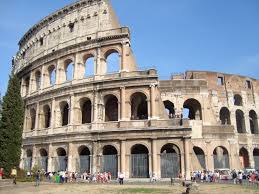This week we are studying the Inca Empire. The Incas are American Indian people of Peru who in the two centuries before the Spanish discovery of America conquered an area stretching from the southern border of present-day Colombia to central Chile. Centering on the city of Cuzco in
the Peruvian Andes, the Inca domain included the coastal and mountain regions of Ecuador, Peru, Bolivia, and the northern areas of Chile and Argentina--the only true empire existing in the New World at the time of Columbus, and the greatest political achievement of the American Indians. In the native language the term ``Inca'' was the title of the Indian emperor. Today, however, it is also applied to the original tribe of conquerors and to all those people who made up the empire.
In 1500 C.E., the Inca Empire was the biggest, wealthiest civilization in Mesoamerica. They ruled over a diverse area of mountains and rain forest, some 2,500 miles in length. Hundreds of tribes with varying languages were commanded by the Inca from the capital city of Cuzco. Yet, by 1532 the Inca Empire was gone.
When Spanish conquistador Francisco Pizarro landed in Peru in 1532, he found unimaginable riches. The Inca Empire was in full bloom. The streets were not paved with gold, but their temples were.
The Coricancha, or Temple of Gold, boasted an ornamental garden where the clods of earth, maize plants complete with leaves and corn cobs, were fashioned from silver and gold. Nearby grazed a flock of 20 golden llamas and their lambs, watched over by solid gold shepherds. Inca nobles strolled around on sandals with silver soles protecting their feet from the hard streets of Cuzco.
.
The Inca called their empire Tahuantinsuyu, or Land of the Four Quarters. Within its domain were rich coastal settlements, high mountain valleys, rain-drenched tropical forests and the driest of deserts. The Inca controlled perhaps 10 million people, speaking a hundred different tongues. It was the largest empire on earth at the time. Yet when Pizarro executed its last emperor, Atahualpa, the Inca Empire was only 50 years old.
The true history of the Inca is still being written. According to one story, four brothers emerged from Lake Titicaca. During a long journey, all but one disappeared. Manco Capac survived to plunge a golden staff into the ground where the Rios Tullamayo and Huantanay meet. He founded the sacred city of Cuzco.
Cuzco is nestled in a mountain valley 10,000 feet above sea level. It formed the center of the Inca world. The first emperor, Pachacuti transformed it from a modest village to a great city laid out in the shape of a puma. He also installed Inti, the Sun God, as the Incas' official patron, building him a wondrous temple.
And he did something else which may explain the Inca's sudden rise to power. He expanded the cult of ancestor worship. When a ruler died, his son received all his earthly powers, but none of his earthly possessions. All his land, buildings, and servants went to his panaqa, or other male relatives. The relatives used it to preserve his mummy and sustain his political influence. Dead emperors maintained a living presence.
A new ruler had to create his own income. The only way to do that was to grab new lands, subdue more people, and expand the Empire of the Sun.
The Inca were great builders. They loved stone, almost as much as they revered gold. At magical Machu Picchu, a frontier fortress and a sacred site, a mystic column, the hitching post of the Sun, is carved from the living rock. Another slab is shaped to echo the mountain beyond.
Spanish leader Francisco Pizarro captured and ransomed the last Inca emperor, Atahualpa, for 24 tons of gold worth $267 million today. After receiving the ransom from the Inca people, the conquistadors strangled Atahualpa anyway.
Temples and fortifications at Machu Picchu were constructed from vast, pillowy boulders, some weighing 100 tons or more. Constructed without mortar, the joins between them are so tight as to deny a knife-blade entry. A vast labor force was required. There are records of 20 men working on a single stone, chipping away, hoisting and lowering, polishing it with sand, hour-by-hour for an entire year.
Everyone was expected to contribute to the empire. Land was divided in three. One third was worked for the emperor, one third was reserved for the gods, and one third the people kept for themselves. All were required to pay taxes as tribute.
The Inca could not write. Tax collectors and bureaucrats kept track of things with quipu, knotted strings. Varying lengths, colors, knot-types, and positions, enabled them to store enormous quantities of information.
Despite its glory, the Incas was a brittle empire, held together by promises and threats. When Pizarro executed the last emperor, it rapidly collapsed. Catholic priests demanding allegiance to a new Christian god soon replaced the Children of the Sun. As they had for thousands of years, the hardy peoples of the Andes adapted. They took what they must from their new masters, and held onto as many of their old ways as they could.
The Incas ate everything from Alpaca, Llamas, Guinea Pigs, Quinoa, Corn, and Potatoes. This week we decided to cook a Sweet Incan Porridge with Red and Plain Quinoa, Mango, Almonds, Cinnamon, Vanilla, and Dried Fruits. Traditionally, this was made with llama milk. We substituted unsweetened almond milk instead. It was delicious!






